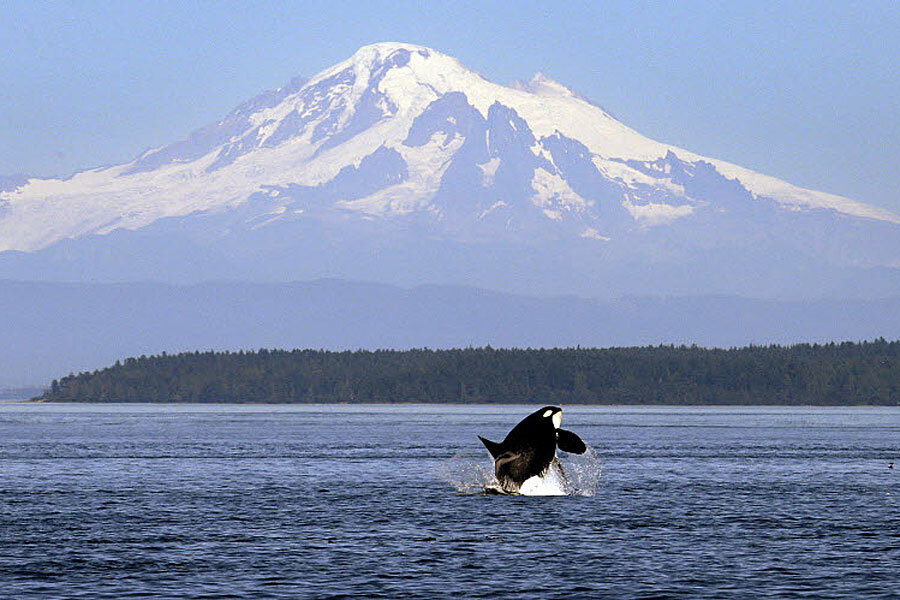Could a fifth baby orca signal a rebound for Pacific killer whales?
Loading...
A fifth orca joins what has been described as a baby boom in the Pacific Northwest.
These baby killer whales bring hope as they join the region’s three endangered pods. The new additions have all come since December.
The newest baby was first spotted Monday by members of the Center for Whale Research. The researchers first saw the baby swimming alongside its mother when they were measuring the whales during a fly-over near Sooke, British Colombia.
The new orca calf was named L122, signifying that it is part of the Puget Sound’s L-pod.
Researchers hope the uptick in orca births this year signals a comeback following a slide in the area’s orca population over recent years.
In the mid-1990s, the orca population in the area reached a high of 98, helping make the region famous for the killer whales. But, according to The Christian Science Monitor, that number slid to 78 whales in the summer of 2014.
When a pregnant orca was found dead in the Straight of Georgia near Vancouver in December, the population dropped further, to 77.
With these newborns, the group swells to 82 whales.
But these births don’t ensure the population growth needed to take the animals off the endangered list, as The Monitor reported earlier this summer.
About 35 to 45 percent of newborn orcas don't make it past their first year, according to NOAA. If these babies survive, they will be the first successful newborns in the Puget Sound population in about two and a half years.
Eric Ward, who tracks the whale population for NOAA Fisheries, [said] the pods are still a long way from the 120 whales necessary to remove them from the endangered list.
The mother orca and her new calf were joined Monday by members of the other two pods of the area, the J- and K-pods, as they swam in the Haro Strait.
This report includes material from the Associated Press.






